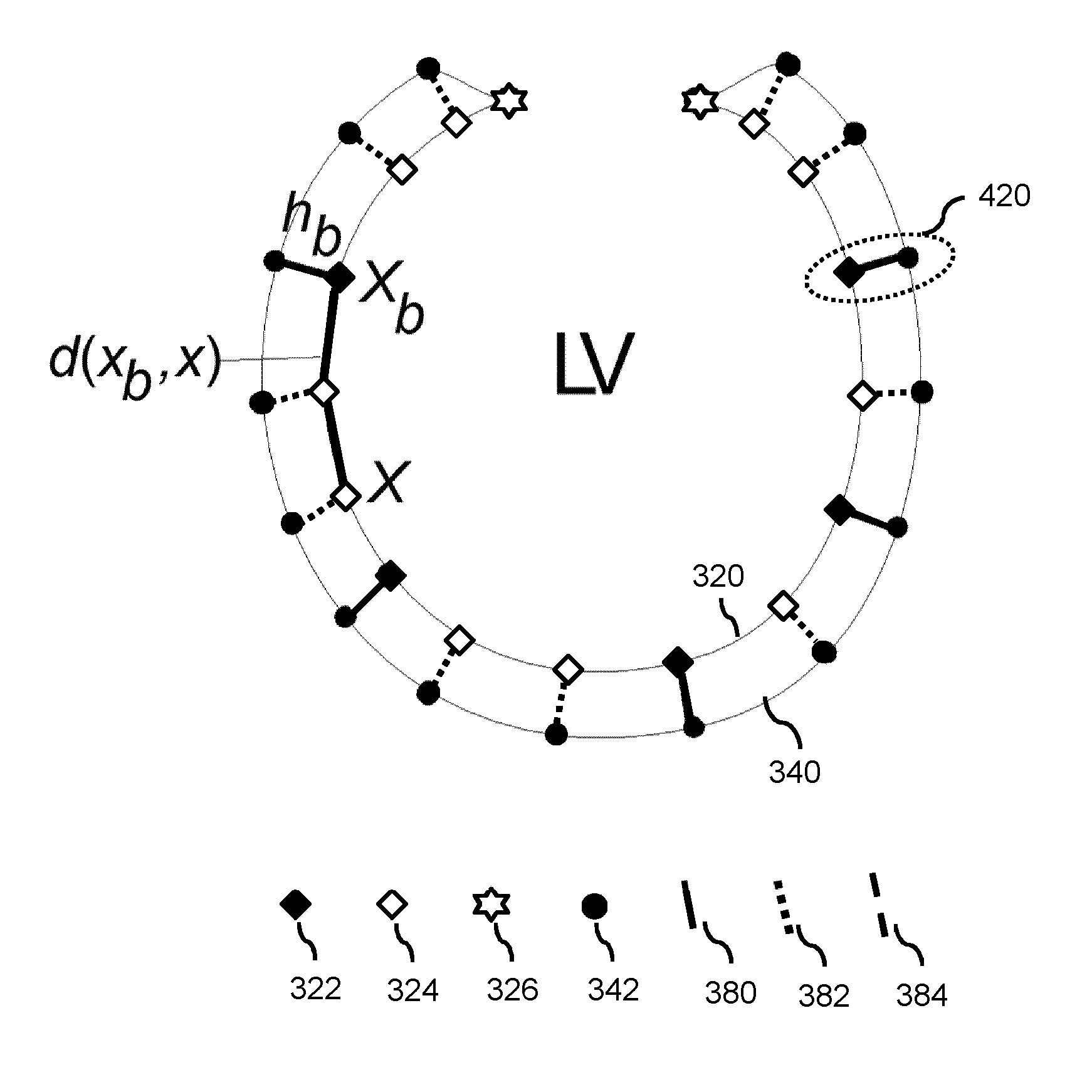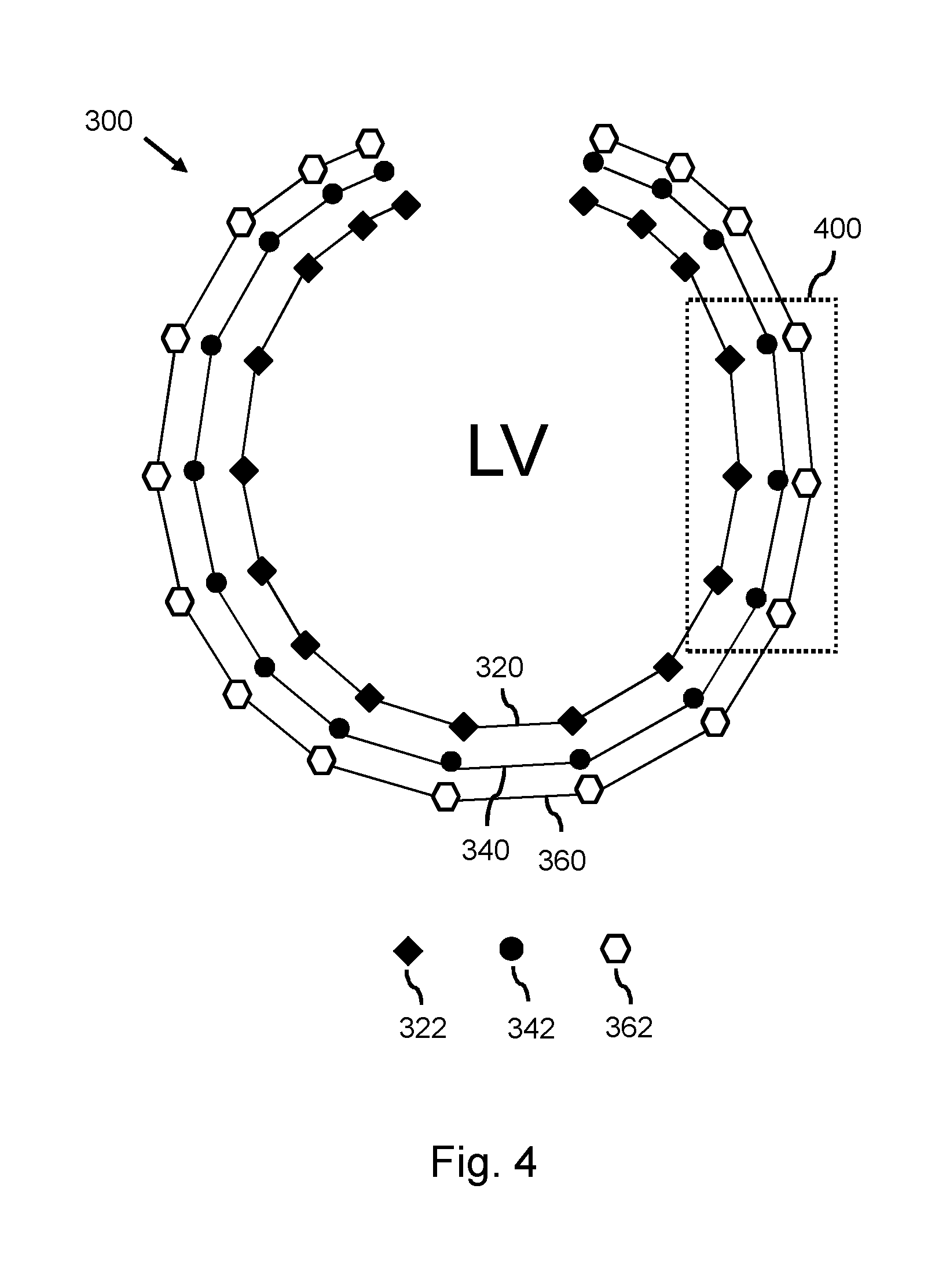Model-based segmentation of an anatomical structure
a model-based, anatomical technology, applied in the field of model-based segmentation of anatomical structures, can solve problems such as insufficient suitability, and achieve the effects of improving spatial resolution of deformable models, improving imaging, and improving depth precision
- Summary
- Abstract
- Description
- Claims
- Application Information
AI Technical Summary
Benefits of technology
Problems solved by technology
Method used
Image
Examples
Embodiment Construction
[0059]FIG. 1 shows a system for generating a deformable model for segmenting an anatomical structure in a medical image, as well as a system for applying the deformable model to the anatomical structure in the medical image. By way of example, FIG. 1 shows a single system 100 providing both functionalities. It will be appreciated, however, that in practice both functionalities may be separated, i.e., performed by different systems.
[0060]Referring firstly to the generating of the deformable model, the system 100 may comprise a processing subsystem 140 configured for:
i) providing a first surface mesh for being applied to the first surface layer of the wall during a model-based segmentation,
ii) providing a second surface mesh for being applied to the second surface layer of the wall during the model-based segmentation, and
iii) generating an intermediate layer mesh for being applied in-between the first surface layer and the second surface layer during the model-based segmentation, said...
PUM
 Login to View More
Login to View More Abstract
Description
Claims
Application Information
 Login to View More
Login to View More - R&D
- Intellectual Property
- Life Sciences
- Materials
- Tech Scout
- Unparalleled Data Quality
- Higher Quality Content
- 60% Fewer Hallucinations
Browse by: Latest US Patents, China's latest patents, Technical Efficacy Thesaurus, Application Domain, Technology Topic, Popular Technical Reports.
© 2025 PatSnap. All rights reserved.Legal|Privacy policy|Modern Slavery Act Transparency Statement|Sitemap|About US| Contact US: help@patsnap.com



